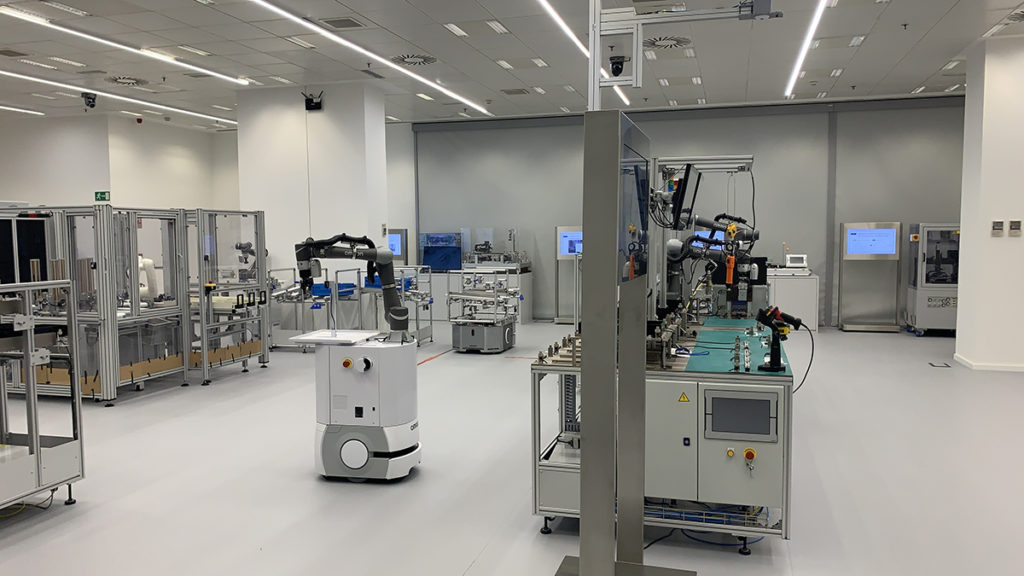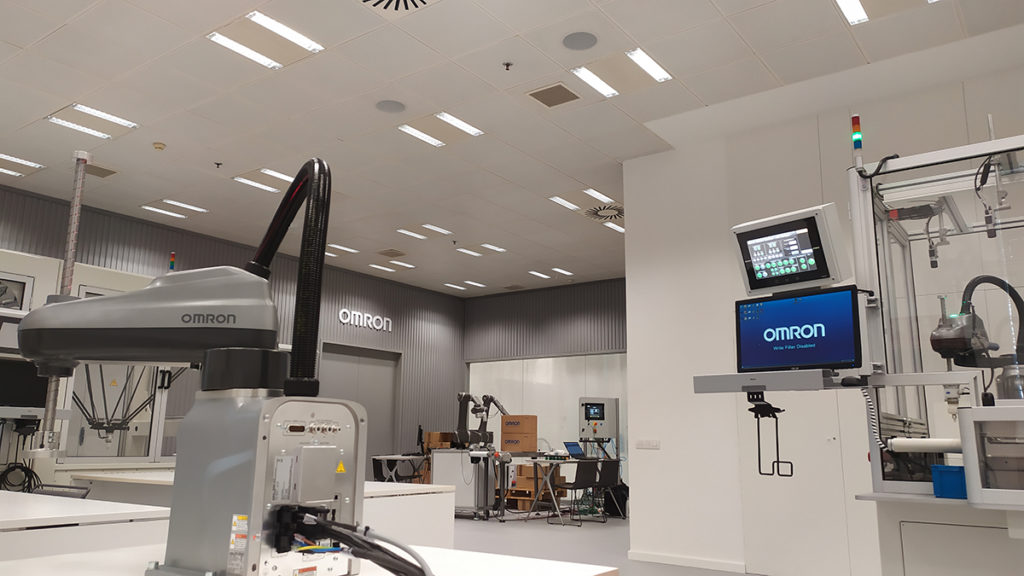OMRON recently opened the doors to its redesigned and expanded Automation Center in Barcelona. Stuart Coulton, marketing manager for UK & Ireland, answered Packaging Scotland’s questions about the facility.
Q) What were the reasons behind OMRON’s decision to redesign the automation center and what benefits will it bring for food manufacturers?
A) The evolution of technology in the automation world is gathering significant pace. With the advent of the Industrial Internet of Things, robotics and data driven process optimisation, it is really important to increase our agility in terms of highlighting the benefits that the technology of both today and tomorrow can bring to manufacturers.
OMRON’s industry centric business model enables us to focus our resources to thoroughly understand the needs of the food and beverage sector. This enables us to drive specialised proof-of-concept development aimed at solving the sector’s current and future challenges whilst delivering significant competitive advantages to our clients.
Finally, we believe we have a fascinating story to tell but it isn’t just about the story itself – it is also about how we tell it. ATC Barcelona creates a much more immersive and engaging experience for visitors enabling to really live and breathe the story we are telling, giving much greater security that they are working with an industry leader. This, we feel, reduces the perceived risk associated with new equipment investments.
Q) What feedback have you had from those who have experienced the new demonstration area?
A) Overwhelmingly positive. The hybrid approach of physical demonstrations that are also accessible in a virtual environment has enabled visitors to bring their own applications to life much faster than previously thought possible. Furthermore, the ability to visualise how future technologies could develop has stimulated vastly increased creativity across an array of different manufacturers.
Q) What trends are you seeing in the sector at the moment?
A) The overwhelming short-term challenge facing the sector at present is the availability of workers. There are clearly a number of contributing factors to this (ageing workforce, Brexit, Covid-19) but the net result is still the same: there simply are not enough people to enable food producers to satisfy demand. Consequently, manufacturers are asking us to survey their production lines looking for opportunities to automate processes and redeploy people into tasks that are difficult/impossible to automate. This has caused a huge uptick in demand for traditional and collaborative robotics, with the latter providing opportunities to often fulfil multiple roles due to the ease of setup and ability to redeploy with minimal downtime.
From a longer term perspective, sustainable manufacturing, and in particular, plastic reduction is a key strategic priority for our clients. Development of heat-sealing algorithms that are able to reliably seal packs of perishable products with thinner films (or, increasingly, bio-films) and the ability to minimise the use of glue and plastic tape when boxing cases and cartons of packed goods are two exciting challenges that we are frequently discussing with the market.
Q) Has the pandemic accelerated demand for automated solutions?
A) When we reflect on the pandemic from start to finish, it is clear that demand for automated solutions has increased dramatically. There are several reasons for this:
Social distancing has made it very difficult to achieve pre-pandemic levels of productivity using humans alone. In essence, standing shoulder to shoulder is no longer realistic meaning, in some cases, the number of people operating a line has more than halved.
Consumer demand for packaged goods has risen quite substantially during lockdown periods. As a result, the impacts of process bottlenecks are being magnified, particularly in end of line processes, creating a rapidly expanding market for flexible palletising solutions.
First seen last year with the now infamous ‘pingdemic’ worker absences due to Covid isolation protocols have led to a much less predictable workforce profile. Simply put, manufacturers cannot say with any clarity how many employees will be able to turn up to work from one day to the next. The only realistic solution to this is automation.
Q) How important is early collaboration on a project?
A) The earlier the better really. Collaborating earlier in the process allows our team of specialists to consult on decisions from the very beginning ensuring all technical angles have been considered. Many elements of investment risk stem from the fact that decisions are taken prior to engaging a specialist automation manufacturer leading to a ‘hybrid’ solution that isn’t necessarily achieving what it could.
That said, the agility and creativity that stems from our ATC enables OMRON to develop game changing solutions that sit within the constraints of any decisions made prior to engagement.
Q) What employment roles do you expect the Automation Center to create for the future workforce?
A) This is particularly exciting for the manufacturing sector. The very fact that automated systems are in such huge demands stems from the lack of available resource to carry out repetitive, often undesirable tasks. The resource that is available to complete these tasks are not being utilised any where near their potential. By investing in automated production systems, manufacturers are opening avenues for their people to develop new careers centred around designing, operating, maintaining and optimising these systems – helping them to acquire exciting new skills and developing new sources of competitive advantage for the manufacturer themselves.















